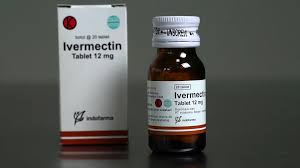Invega Sustenna
Here is an elaborate overview of Invega Sustenna (paliperidone palmitate), enriched with insights into its pharmacological properties, administration details, long-term implications, and monitoring protocols.
Pharmacology and Mechanism of Action:
Active Component: Invega Sustenna features paliperidone, a key metabolite derived from risperidone, another distinguished atypical antipsychotic. Paliperidone exerts its effects by antagonizing dopamine and serotonin receptors within the cerebral landscape.
Dopamine D2 Receptor Antagonism: This mechanism is pivotal in alleviating symptoms such as hallucinations and delusions that are characteristic of schizophrenia.
Serotonin 5-HT2A Receptor Antagonism: This function plays a significant role in enhancing mood and mitigating anxiety.
The synergistic action on both dopamine and serotonin receptors is believed to confer antipsychotic benefits while minimizing. The risk of certain adverse effects commonly associated with traditional antipsychotics, such as movement disorders.
Pharmacokinetics (The Body’s Response):
Absorption: Following administration, paliperidone is gradually absorbed into the bloodstream, resulting in a prolonged therapeutic effect designed to endure for 4-5 weeks post-injection. The controlled release from the injection site ensures stable plasma concentrations.
Half-life: The half-life of Invega Sustenna ranges from approximately 25 to 49 days, justifying its monthly administration. This extended half-life guarantees sustained presence in the bloodstream.
Metabolism: Paliperidone undergoes primary metabolism in the liver via cytochrome P450 enzymes, particularly CYP2D6, though it exhibits minimal hepatic metabolism relative to other antipsychotic agents.
Excretion: The drug is predominantly eliminated through the kidneys, necessitating vigilant monitoring of renal function in patients with compromised kidney health.
Administration and Dosing:
Initial Dosing: The treatment protocol generally commences with a two-phase initiation regimen:
Day 1: A single injection of 234 mg is administered.
Week 1: A follow-up dose of 156 mg is provided one week subsequent to the initial injection.
Following the initiation phase, the standard maintenance dosage is set at 117 mg monthly, administered every four weeks. However, this dosage may fluctuate between 39 mg and 234 mg, contingent upon the individual patient’s response and tolerance levels.
Injection Site: The administration typically occurs in the deltoid or gluteal muscle, with the gluteal site often favored for larger doses, such as 234 mg, due to its greater muscle mass.
Administration Considerations:
Pre-injection assessments: Before each injection, healthcare professionals may evaluate the injection site, confirm the absence of allergies to the medication, and monitor for any potential adverse reactions.
Injection Technique: It is imperative that only qualified healthcare providers perform this injection, given its intricate nature, particularly when larger doses are necessary.
Long-Term Use & Benefits:
Minimized Risk of Non-Adherence: With Invega Sustenna being administered monthly, patients are less prone to missing doses compared to daily oral medications. This is especially crucial in managing conditions like schizophrenia, where treatment adherence poses a significant challenge.
Prevention of Relapse: Long-acting injectables such as Invega Sustenna play a vital role in preventing relapses in schizophrenia, as they help sustain stable blood levels of the medication, thereby mitigating the risk of symptom exacerbation.
Mood Stabilization: For individuals with schizoaffective disorder, this medication effectively manages both psychotic and mood-related symptoms over time.
Side Effects:
Common side effects:
Weight gain: A prevalent concern with many atypical antipsychotics, including Invega Sustenna, which may elevate the risk of metabolic complications.
Sedation/fatigue: Patients may experience tiredness or drowsiness, particularly during the initial stages of treatment or when adjusting to the medication.
Movement disorders: These may manifest as extrapyramidal symptoms (EPS), including tremors, muscle stiffness, and restlessness, which can be particularly bothersome in the early treatment phases.
Serious side effects:
Tardive dyskinesia (TD) is a movement disorder marked by involuntary, repetitive motions of the face and limbs. While the incidence is reduced with contemporary antipsychotics such as Invega Sustenna, it remains a possibility, particularly with prolonged usage.
Metabolic side effects are noteworthy; akin to other atypical antipsychotics, Invega Sustenna may lead to weight gain, elevated blood sugar levels (hyperglycemia), and dyslipidemia, which encompasses abnormal cholesterol and triglyceride levels. These factors collectively heighten the risk of diabetes, hypertension, and cardiovascular complications.
Cardiovascular risks associated with Invega Sustenna include alterations in heart rhythm, notably QT interval prolongation, which could precipitate arrhythmias in vulnerable individuals.
Neuroleptic Malignant Syndrome (NMS) is a rare yet critical condition that can manifest with symptoms such as fever, muscle rigidity, and altered mental status.
Monitoring and Special Considerations:
Kidney Function: As paliperidone is predominantly eliminated through the kidneys, those with renal impairment may require dosage adjustments. Regular assessments of renal function, including creatinine levels, are essential.
Metabolic Monitoring: Given the potential for weight gain, glucose dysregulation. Lipid alterations, patients receiving Invega Sustenna should undergo consistent evaluations for:
– Weight
– Blood glucose levels
– Lipid profile (cholesterol and triglycerides)
Cognitive Effects: Certain individuals may experience cognitive shifts or exacerbation of symptoms like confusion, particularly among the elderly. Long-term administration necessitates vigilance for any decline in cognitive abilities.
Safety Concerns and Warnings:
Elderly Patients: The use of antipsychotics such as Invega Sustenna in older adults, especially those with dementia, is associated with an elevated risk of mortality due to stroke or heart failure.
Pregnancy and Lactation: Classified as a Category C medication during pregnancy, Invega Sustenna should be prescribed only when absolutely necessary, as there is a lack of comprehensive safety data for pregnant women. Caution is also warranted for breastfeeding mothers.
Alcohol: The consumption of alcohol may intensify the sedative properties of Invega Sustenna; therefore, it is advisable to limit alcohol intake during the course of this medication.

Patient Counseling and Support:
Patients undergoing treatment with Invega Sustenna should be well-informed about the following:
Adherence to treatment: It is crucial to receive the injection as scheduled, regardless of feeling improvement, to ensure consistent symptom management.
Possible side effects: Patients should be made aware of common side effects such as weight gain, drowsiness, and dizziness, as well as more serious concerns like movement disorders or cardiovascular issues.
Emergency symptoms: Education on the signs of Neuroleptic Malignant Syndrome (NMS), including fever, muscle rigidity, and altered mental status, is essential, along with awareness of severe allergic reactions that necessitate immediate medical intervention.
Conclusion:
Invega Sustenna serves as an invaluable asset in the treatment of schizophrenia and schizoaffective disorder, providing the convenience of monthly injections that enhance medication adherence. While it holds the potential for significant symptom relief, vigilant monitoring for side effects, including metabolic changes and movement disorders, is imperative. Regular consultations with healthcare providers are vital to address any adverse effects and to make necessary adjustments to the treatment plan. It is always prudent to engage in comprehensive discussions regarding treatment options with your physician to ascertain the suitability of the medication for your unique circumstances.





